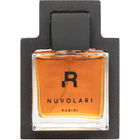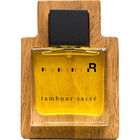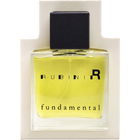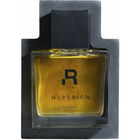“Inspired by the bucolic writings of the Latin poet Virgil,” so begins the text on the postcard-sized flyer that was also included in the package from Mantua.
After the Italian racing legend Tadzio Nuvolari, now it’s the national poet of ancient Rome and his ‘Bucolica’, a collection of pastoral poems.
Even the Rubini-typical heavy plaster bowls, between which the bottle is nestled, reveal that this will be green, more precisely: moss green.
But the fragrance wouldn’t be from Rubini if it didn’t interpret the theme of “green” completely differently than the great champions of this genre usually did and still do: from ‘Vent Vert’ to ‘Ma Griffe’, to ‘Cristalle’, ‘Aliage’, and finally ‘Synthetic Jungle’. Their green is consistently a brighter green, a more airy one. Usually, lily of the valley plays a role, a bit of vetiver, but above all galbanum.
In this ode to nature, all three are missing. Instead, I smell fresh mown grass, alongside already dried hay, bitter tomato leaf, and berry fruit, but above all: the sweetly aromatic scent of chamomile.
One must like chamomile to appreciate this fragrance. I like it, and here there are even two of these daisy family members at play: Roman chamomile and blue or true chamomile. Its characteristic scent is, for me, the actual link to Virgil and his bucolic poems: the Romans loved chamomile. Not only did they drink its infusion or mix it into ointments, but it was also used to lighten hair.
Here, chamomile is at the center of the fragrance, as a link between the subtle berry sweetness at the beginning and the gradually blooming floral notes, which remind me a bit of the scent of linden blossoms. Like a dense carpet beneath it all: the fresh mown grass, aromatic herbs, coniferous shrubs, dusty, dried brush (probably from straw flowers, the Everlasting Flowers mentioned on the manufacturer’s site, and not from the immortelle, which I can’t detect here no matter how hard I try), and beneath that, mossy and woody nuances that give the fragrance depth and fix it.
The interesting thing about this fragrance: every time I spray it, I feel like I perceive different facets. Sometimes I distinctly smell the berries, which I search for in vain the next time amid the hay and herbal notes, while the third time I feel like I’m standing in a chamomile field - a somehow kaleidoscopic, iridescent fragrance that seems to change continuously, like nature does with the constantly changing light.
The bucolic Italian landscape in late spring, so eloquently conjured by Rubini - I find it has been translated into absolutely plausible scent images: the green, the berries, the chamomile, the linden blossoms, the moss, everything wonderfully interlocks and amalgamates into a dense, aroma-rich odeur that I would love to sip like an aperitif. Now, a blanket spread out, red wine, cheese, bread, and olives unpacked - a picnic in this wonderfully fragrant nature, that would be it!
I must say, Rubini has once again created an extraordinary work here, in the way that the three predecessors were each extraordinary: ‘Fundamental’ with its characterful waxy grape note, ‘Tambour Sacré’ with its very special combination of tuberose, acacia, and coffee, and ‘Nuvolari’ with its gasoline-soaked, metallic-leathery facets: all great fragrances, some a bit bizarre and extravagant, but never so much that one would have to make serious compromises in terms of wearability.
No, they are all wearable, and ‘Odenaturae’ is perhaps the most wearable of the four: no precarious animalics, no shrill dissonances, no (often unjustly!) infamous ambroxan. Nevertheless, ‘Odenaturae’ is not a smooth, polished crowd-pleaser, but a demanding and expressive fragrance, contrasting, with depth, volume, and an exciting selection of notes (broom, hyssop, savory, bay, angelica!), where, at least for my perception, everything is right: inspiration, execution, quality of ingredients, and an artfully crafted composition.
For me, this new work once again confirms that the Rubini house is a very special one, one that knows how to unite creativity and high artistic standards, and to maintain them, thus refuting the unwritten law that the first creations are always the best. No, Cristiano Canali and Andrea Rubini set the bar incredibly high eight years ago with their spectacular debut, but they have not lowered it since (for the third time in a row!).
That’s something to achieve!
Thus, the house stands out wonderfully from the crowd of labels that are increasingly churning out entire series of fragrances, always hiring the same handful of perfumers who, in turn, produce (it feels like) the same oud, aquatic, gourmand, neo-chypre, neo-fougère, etc.
Profile is gained differently. Profile is gained with a risk, and that’s what Canali and Rubini have taken. And profile is also gained with continuity, like Coco Chanel with Ernest Beaux, like Robert Piguet with Germaine Cellier, like Christian Dior with Edmond Roudnitska, like Estée Lauder with Bernard Chant, and recently Marc-Antoine Barrois with Quentin Bisch - congenial partnerships that created and are creating unique perfume masterpieces. Rubini and Canali are also following this path, albeit on a smaller scale and with a shorter reach, as their works do not come under the banner of haute couture, but as small, fine, standalone fragrance artworks that must do without the fanfare of the fashion world, and hopefully can endure for a long time.
Oh yes, between the rubber and the two plaster bowls that it encompasses, there was a small square note, handwritten: Enjoy! Andrea Rubini
Signor Rubini, I enjoy this fragrance so much!







 Roman chamomile
Roman chamomile Broom absolute
Broom absolute Chamomile
Chamomile Tomato leaf
Tomato leaf Basil
Basil Clary sage
Clary sage Mastic
Mastic Woods
Woods Angelica
Angelica Bitter orange
Bitter orange Hyssop
Hyssop Immortelle
Immortelle Laurel
Laurel Rosa centifolia absolute
Rosa centifolia absolute Wild berries
Wild berries Orange blossom absolute
Orange blossom absolute Savory
Savory









 Ka3n
Ka3n AndreiREC
AndreiREC Holscentbar
Holscentbar Rupansai
Rupansai FashionFrag
FashionFrag Scentsybeast
Scentsybeast Floyd
Floyd Eggi37
Eggi37 JonasP1
JonasP1 Yatagan
Yatagan













